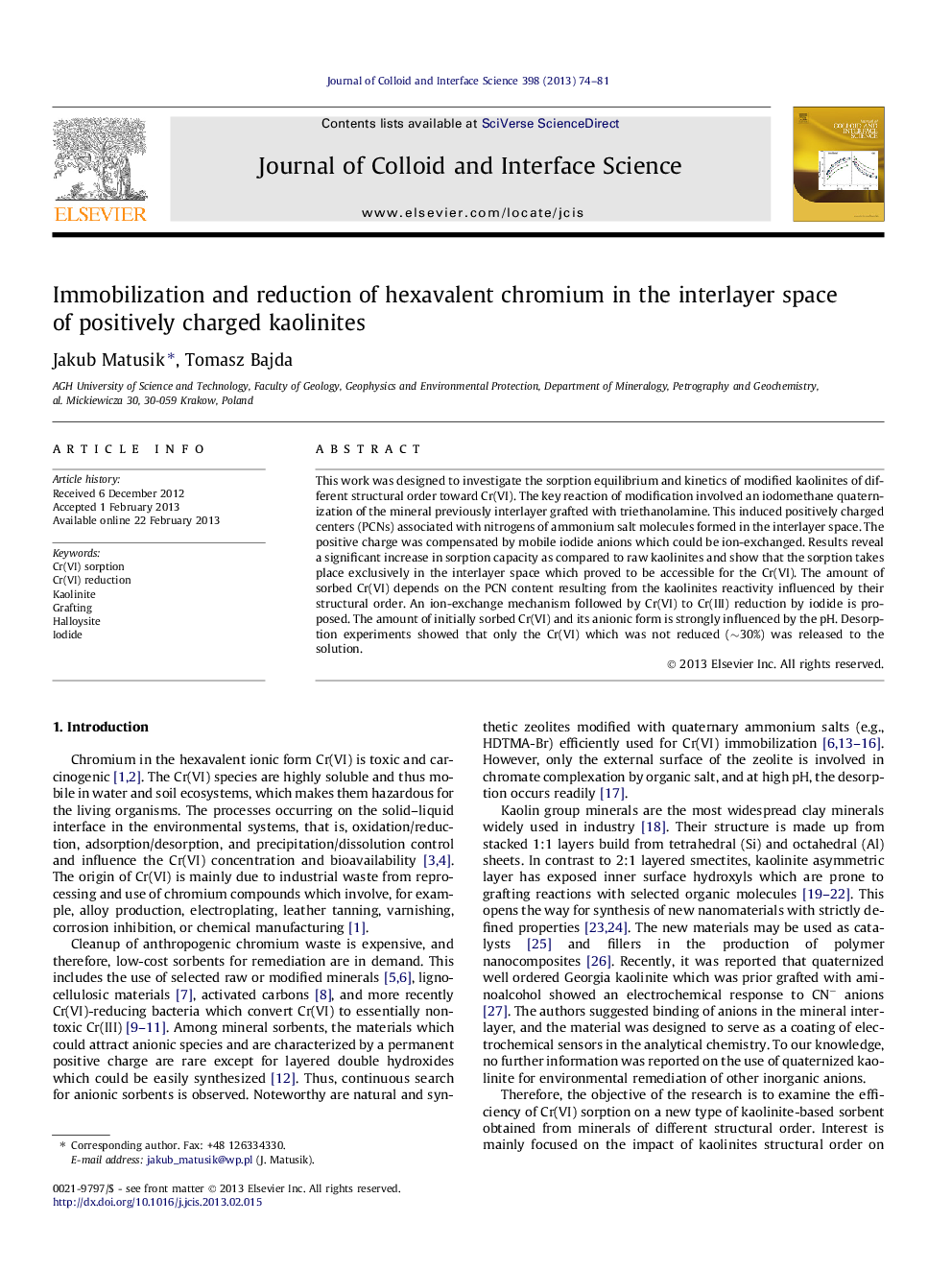| Article ID | Journal | Published Year | Pages | File Type |
|---|---|---|---|---|
| 607869 | Journal of Colloid and Interface Science | 2013 | 8 Pages |
This work was designed to investigate the sorption equilibrium and kinetics of modified kaolinites of different structural order toward Cr(VI). The key reaction of modification involved an iodomethane quaternization of the mineral previously interlayer grafted with triethanolamine. This induced positively charged centers (PCNs) associated with nitrogens of ammonium salt molecules formed in the interlayer space. The positive charge was compensated by mobile iodide anions which could be ion-exchanged. Results reveal a significant increase in sorption capacity as compared to raw kaolinites and show that the sorption takes place exclusively in the interlayer space which proved to be accessible for the Cr(VI). The amount of sorbed Cr(VI) depends on the PCN content resulting from the kaolinites reactivity influenced by their structural order. An ion-exchange mechanism followed by Cr(VI) to Cr(III) reduction by iodide is proposed. The amount of initially sorbed Cr(VI) and its anionic form is strongly influenced by the pH. Desorption experiments showed that only the Cr(VI) which was not reduced (∼30%) was released to the solution.
Graphical abstractFigure optionsDownload full-size imageDownload high-quality image (286 K)Download as PowerPoint slideHighlights► Grafted kaolinites with positively charged centers in the interlayer were obtained. ► Kaolinite-based sorbents are characterized by high affinity toward Cr(VI). ► The Cr(VI) removal firstly involves an ion-exchange with iodide in the interlayer. ► The attracted Cr(VI) is reduced to Cr(III) by iodide ions and sorbed on kaolinites. ► The sorption follows Langmuir isotherm model and is a pseudo-second order reaction.
